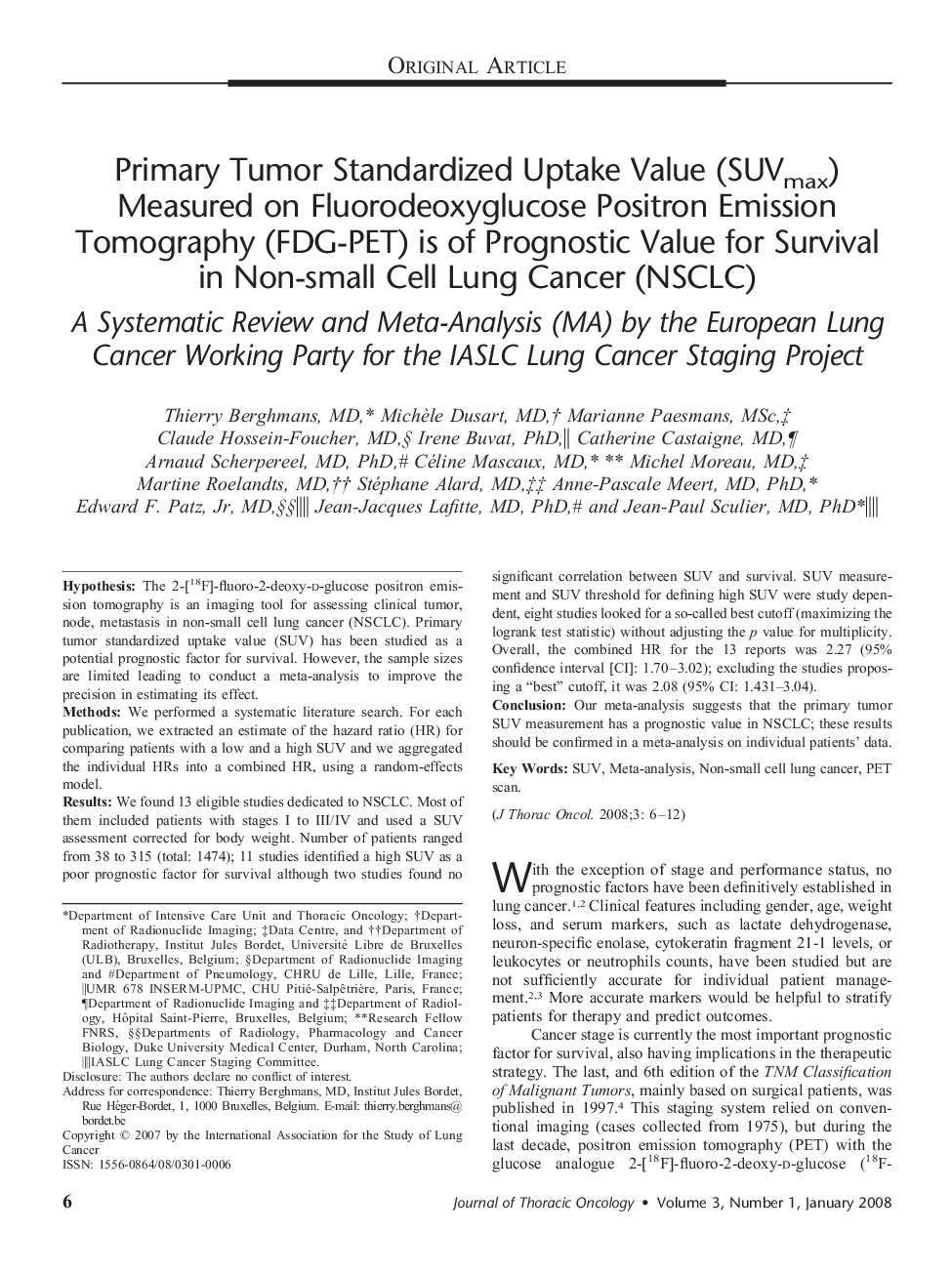| Article ID | Journal | Published Year | Pages | File Type |
|---|---|---|---|---|
| 3992599 | Journal of Thoracic Oncology | 2008 | 7 Pages |
HypothesisThe 2-[18F]-fluoro-2-deoxy-d-glucose positron emission tomography is an imaging tool for assessing clinical tumor, node, metastasis in non-small cell lung cancer (NSCLC). Primary tumor standardized uptake value (SUV) has been studied as a potential prognostic factor for survival. However, the sample sizes are limited leading to conduct a meta-analysis to improve the precision in estimating its effect.MethodsWe performed a systematic literature search. For each publication, we extracted an estimate of the hazard ratio (HR) for comparing patients with a low and a high SUV and we aggregated the individual HRs into a combined HR, using a random-effects model.ResultsWe found 13 eligible studies dedicated to NSCLC. Most of them included patients with stages I to III/IV and used a SUV assessment corrected for body weight. Number of patients ranged from 38 to 315 (total: 1474); 11 studies identified a high SUV as a poor prognostic factor for survival although two studies found no significant correlation between SUV and survival. SUV measurement and SUV threshold for defining high SUV were study dependent, eight studies looked for a so-called best cutoff (maximizing the logrank test statistic) without adjusting the p value for multiplicity. Overall, the combined HR for the 13 reports was 2.27 (95% confidence interval [CI]: 1.70–3.02); excluding the studies proposing a “best” cutoff, it was 2.08 (95% CI: 1.431–3.04).ConclusionOur meta-analysis suggests that the primary tumor SUV measurement has a prognostic value in NSCLC; these results should be confirmed in a meta-analysis on individual patients’ data.
